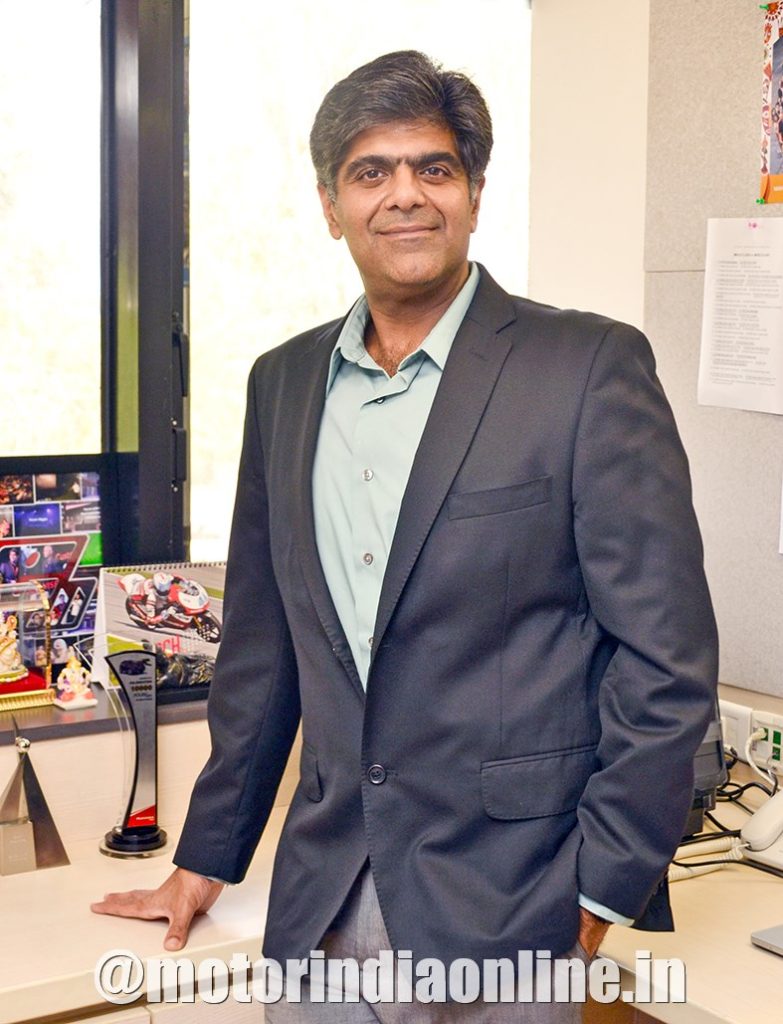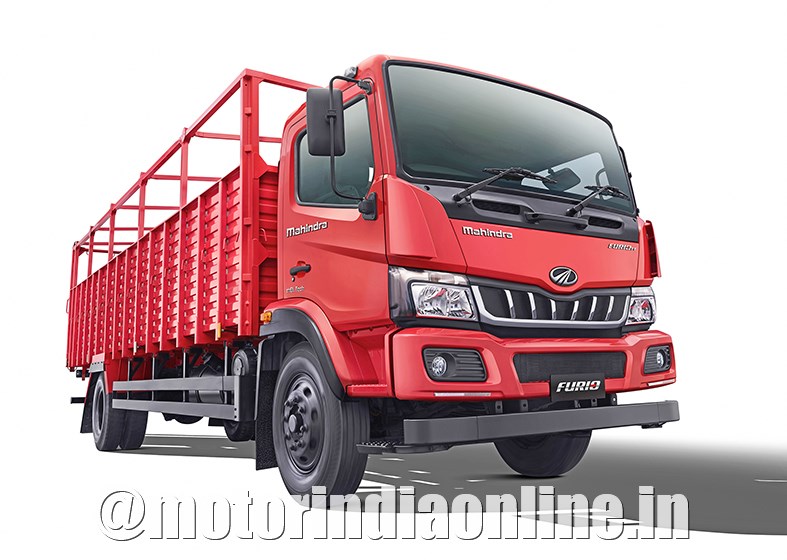– Veejay Nakra, CEO (Automotive Division), Mahindra & Mahindra
He has a new title following his name but he is not new to the volatility of the automotive segment. In this candid interaction with MOTORINDIA’S N Balasubramanian, Veejay Nakra, CEO (Automotive Division), Mahindra & Mahindra Limited, opens up on how his company has weathered the pandemic-triggered lockdown while getting manufacturing facilities ready, preparing for the BS VI changeover, dealing with changing consumer preferences and exploring new opportunities for the small, medium and heavy commercial vehicles

Could you please give us an update about the Mahindra & Mahindra dealerships and production facilities and how the company has handled the entire pandemic and lockdown?
It has been 90 days after the pandemic actually hit us. This period has been different, interesting and challenging for everyone, not just for Mahindra & Mahindra but the entire industry. Had we done this interaction earlier, my answers would have been a bit different, but today, 90 days down the road, we are a lot more optimistic, pleasantly surprised and delighted to see how things are turning out. No doubt, we have had our fair share of challenges based on the demand and supply side. But yes, now, 90 days later, as we stand, 85% of our commercial vehicle dealers are up and running and 90% of our workshops are operational. The vehicles are already coming in for servicing.
There is some pent-up demand because of the lockdown in terms of service. So, we are seeing those customers coming back to the workshops. On the supply side, all our plants are now operational. The supply chain is geared up to react faster than what we had anticipated. As far as production is concerned, whether it is the ‘Supro’ or ‘Jeeto’ or the ‘Bolero’ pick-up or the city pick-up, we are producing all of these products and have already started dispatching them. They are now available at our dealerships in the BS VI format. Even the ‘Blazo’ and ‘Furio’ range of ICVs are back into production and are being dispatched. Thus, the wheels have started churning and demand has already started trickling in. It implies that business is slowly moving back to normalcy.
As an OEM and also on behalf of other stakeholders, what do you think the government should do in such times to revive demand and also bring back the right sentiments in the market?
Well, I think we need to break this up into two parts. There is a small commercial vehicle portfolio or segment and then there is obviously the medium and heavy commercial vehicles’ segment. I think you know as well as everyone that the dynamics that play out in both of these are very, very different. So right now, if I look at it, obviously there is a demand specifically in the small commercial vehicles’ segment with some buoyancy coming back to the market. This is what is leading to higher sales of products like Supro, Jeeto or Bolero. It can be attributed to the need for movement of goods to the last mile. Everybody wants to go ‘contact-less’.
Therefore, it’s the e-commerce that is calling the shots – the movement of essential items like vegetables, fruits, milk, medicine, etc. All of this obviously is the need of the hour. And clearly, because of that, we are seeing demand there. I think a lot of it could be pent-up demand. I will come to what we need to do structurally here. But obviously on the heavy commercial vehicle side, we sit with the challenge of excess capacity in the industry. It’s going to take more time for that segment to revive and I think a lot will have to do with how the infrastructure and the wheels of the economy turn.
Another important thing that cuts across both SCV and MCV, in my view, is the issue of the scrappage policy. We clearly would want to see the scrappage policy come in from the government to support the industry. Also, GST will have a big role to play, especially in the small commercial vehicles segment. We have been interacting with the government on that front and would now like to see some action. The third factor, in my view, is diesel prices. This plays out even more for the heavy commercial vehicle segment because in the current situation where we have got excess capacity, it’s difficult for the fleet owners to pass on these increased costs to customers.
In this case, support is required from the government, especially when it is fuel that drives the economy in terms of the entire logistics of the country. And the last one is finance. Even though the government has done a lot in terms of providing support to revive the economy, it has largely been in favour of the MSMEs. What is really required is an impetus of finance to be given for purchase of commercial vehicles. Even while we talk about liquidity, the appetite for financiers to fund commercial vehicles remains low.

What are your thoughts on the impact of the pandemic and also about Mahindra & Mahindra’s readiness for the BS VI era?
Making a jump from BS IV to BS VI with the kind of technology that it requires comes at a certain cost both in terms of acquisition and maintenance. But it was certainly needed. Given the economics of the small commercial vehicle segment which is up to 3.5 tons, there already is a demand for BS VI vehicles. From our company’s perspective, we have done a good job in terms of managing the cost of technology in the transition. We took care of the impact of both costs to the customer and it is lower than what one would have expected. Also, by coming up with special financing schemes for the customer, including extending the loan tenure, we have been able to minimise the impact of that cost to the customer.
As far as our readiness is concerned, there is some effect in terms of demand because of the price but, as indicated earlier, it’s been easier in the SCV segment. In the HCV segment, the issue is of excess supply and also the fact that the impact of cost on this segment will be higher, which is why revival will take longer. On the SCV side, we have been quicker than our competitors as far as BS VI-compliance is concerned. One of our advantages in the heavy vehicle range is ‘Blazo’, which is our primary volume driver. The engine used for this vehicle was anyway a high-capacity engine so that the transition was a lot easier for us than our competitors. This is one of the reasons why we could carry out the ‘guarantee’ campaign so effectively.
Every adversity does throw opportunities too. Could you comment on export opportunities the pandemic may have given rise to or some other domestic segments that the company is excited about?
Although there are a few challenges to exports with borders being strictly governed, South East Asia is a big and very strong market for us, whether it’s Nepal, Sri Lanka or Bangladesh. However, even they have their share of challenges that they are currently dealing with. I think in the medium to long term this will play out well. In fact, we are clearly seeing Africa as an emerging market and we are focusing on it with our commercial vehicles, especially the HCVs. To answer the second part of your question about any other segments, it is interesting to watch how the e-commerce industry is playing out and the ability of companies to customize solutions.
Another big opportunity is about creating safe spaces in terms of moving people because eventually everyone will have to get back to work. As such, organisations may have to give a thought to the commuting factor. In as much, the van category may throw up a big opportunity. Our product, ‘Supro’ van, is ready to fulfill that demand and in fact we have even come up with a customized and innovative product with safe partitions within the vehicle. We call it the safe space kit. The third opportunity that we see is the ambulance segment, obviously related directly to the ongoing pandemic. We have been the first to supply the ‘Supro’ ambulance, which currently is the most affordable ambulance in that segment. We have got a large order from the Maharashtra government and the first batch of vehicles has already been supplied. In fact, right now our big challenge is to ramp up the capacity of our suppliers to be able to make the ambulance available. On the HCV side we have already seen the tipper as an opportunity where we see demand. The demand will escalate after more investment is pumped into the infrastructure sector, which is also the mandate of the government.